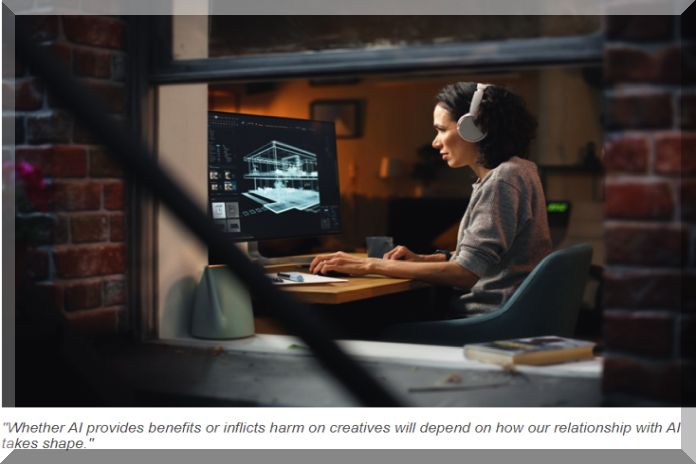By Sylwyn C. Calizo Jr. and Andre Wirjo
Step into a world where creativity reigns supreme and digital technology is your loyal ally. Welcome to the creative economy! Here, industries like fashion, film, music, and software are the superheroes. In APEC, we see Indonesia’s dazzling crafts, Korea’s K-pop that’s more addictive than your favourite snack, Japan’s eye-popping anime, China’s blockbuster film industry, Australia’s sensory arts festivals, and Singapore’s buzzing creative hubs, just to name a few. These industries not only rake in the cash but also sprinkle a bit of magic into our lives. It’s like a never-ending talent show, and everyone’s a winner!
Entertaining as it is, the paragraph that you’ve just read was written entirely by artificial intelligence or AI. Surprisingly, a quick survey among our colleagues showed that half of them thought that we had written it. Not bad for AI! But while this gives us a taste of just how far AI has progressed over the past few years, it also brings to our attention the blurring lines between human creatives and AI. At some point, many creatives may have asked themselves this valid question: should I be afraid of AI?
The short answer to this is yes and no. This feeling of uncertainty is something shared by many people, creatives included. Most feel this way because they believe that while AI opens new opportunities, it also brings social and economic challenges.
On the bright side, many digital technologies such as AI have been very useful in different ways. It could inspire creative ideas and content creations. Many of us probably know of friends who sometimes use generative-AI tools to help break their writer’s block. Such technologies could also help improve creative production and later its distribution. Moreover, it could change how we appreciate and participate in different creative experiences. Fellow video gamers would understand how exciting it is to see virtual reality games develop further – literally a game changer!
While the value of these creativities is plain and clear, advancing their use could be challenging. For example, would people with limited digital literacy and exposure be able to leverage these technologies? Or what if they fear it? Both would be problematic. After all, no matter how good a technology is, one cannot use it if they are not familiar or comfortable with it to begin with.
Across APEC, millions of people remain disconnected from the internet, in particular those located in far-flung areas or those facing affordability issues. We are not even talking about access to various creative technologies yet, which is likely to be more difficult. While there have been many improvements over the past decade, much is still needed to realize universal basic digital inclusion in the region. Until then, the creative economy would be at a disadvantage as it would mean that there are millions of stories, ideas and dreams left untold out there.
But perhaps the most challenging is when there is a lack of a clear legal framework for intellectual property rights. Take, for instance, the times when artists, singers, and other creatives saw their works being used to train AI models without their prior explicit consent. In the absence of enough protections, such cases will understandably stimulate fear on what the future of the creative economy could look like. But hopefully, it will not be like the dystopian future that many creatives felt was portrayed from a big tech firm’s commercial back in May wherein different creative tools and instruments were crushed by a hydraulic press, only to resurface as a single tech product.
At the end of the day, we know that AI and other digital technologies are here to stay. Whether AI provides benefits or inflicts harm on creatives will depend on how our relationship with AI takes shape. Even though policymakers, businesses, creatives and everyone else could see those relationships develop differently, we believe that it is our collective role and interest as a civilization to make sure that human creative talent are still at the front and center of the creative economy.
After all, cultures are the wellspring of creativity. That is something uniquely human. Following this aspiration means that we need to reframe our rules and approaches, such as by clarifying legal issues and working out new education programs that blend art and technology. How this new frame will look remains open for discussion, but what we are sure of is that conversations need to continue. And, on this front, APEC can do what it does best: serve as an incubator of ideas.
– Sylwyn C. Calizo Jr. is a researcher and Andre Wirjo is an analyst at the APEC Policy Support Unit. They are co-authors of the policy brief Reframing an Unfolding Canvas: Policy Approaches to Facilitate APEC’s Creative Economy amid Evolving Digital Technologies.





